Broken bodies and a broken bureaucracy: Armenian soldiers after the war
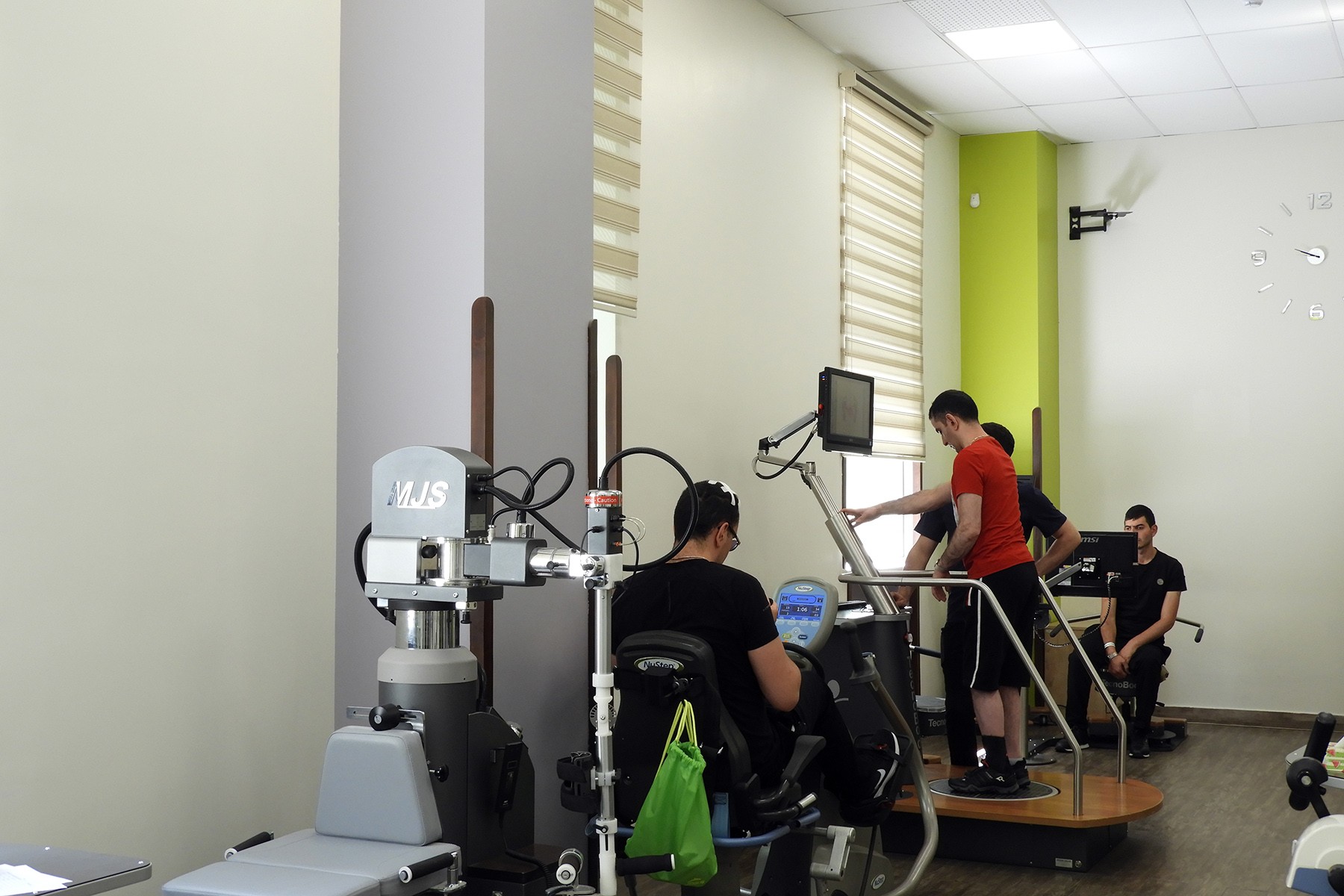
Over 1,000 Armenian soldiers became disabled during the Second Nagorno-Karabakh war. While many are receiving state assistance for rehabilitation others appear to have fallen through the cracks.
‘In the army, Sundays used to be good days’, recalled 19-year-old Manvel Hakobyan with a smile. ‘We were allowed to sleep a bit longer than usual’.
But, Sunday 27 September 2020 was different from any that Manvel had ever experienced. Though he and his comrades expected some kind of escalation, he said that none of them could have predicted the scale of the war that was to follow.
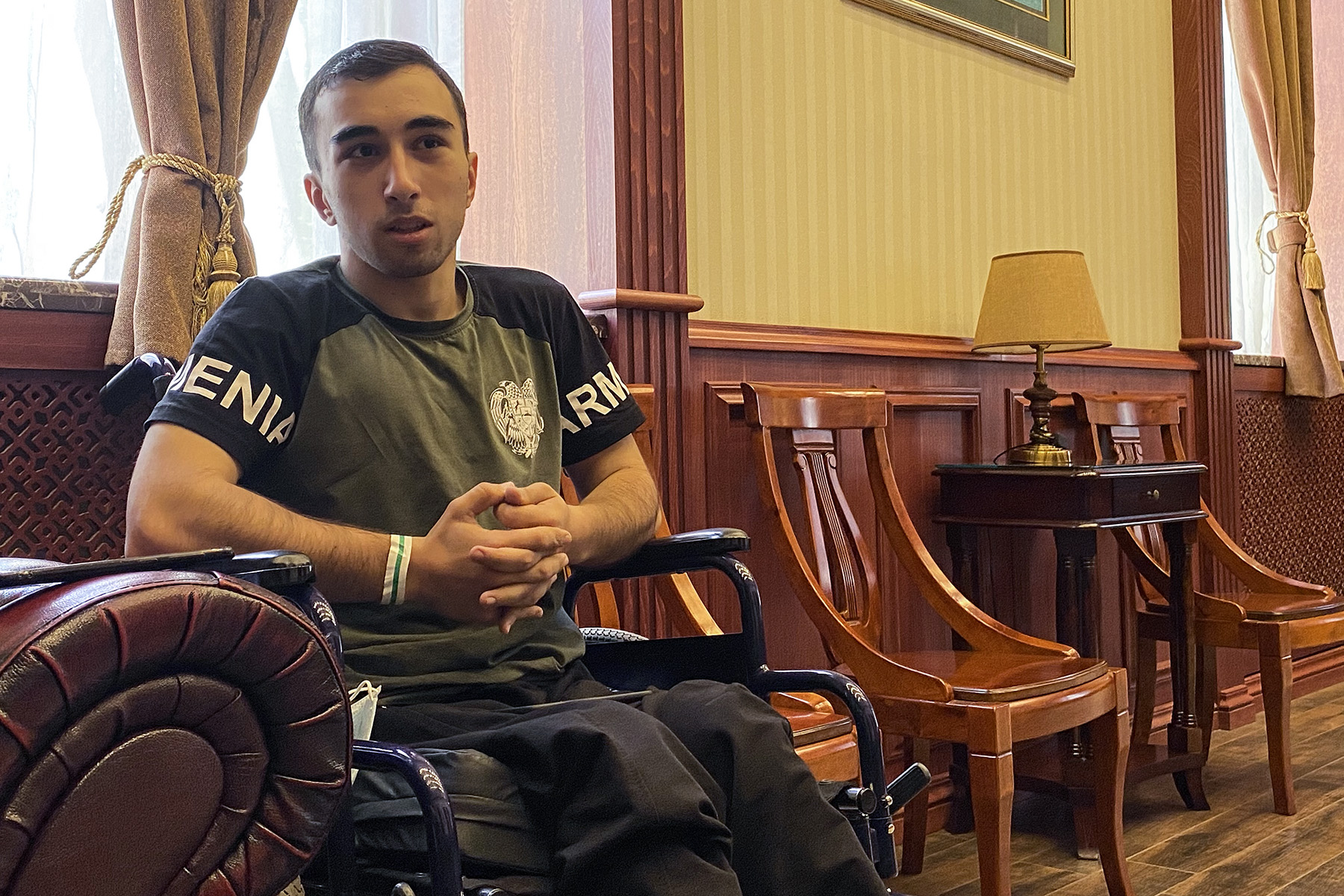
Less than a week later, Manvel was being spirited away to Yerevan, his back broken, with doctors not knowing if he would ever recover. He is one among hundreds, if not thousands who face a long and difficult recovery — a recovery some fear, they might have to undertake alone.
During the forty-four days of the Second Nagorno-Karabakh War, 4,000 Armenian soldiers were killed and 11,000 were injured. Zaruhi Manucharyan, the chief spokesperson for the Ministry of Labour and Social Affairs, told OC Media that of the injured, 1,267 had been granted disability status as of June. Of those, 112 are classified as having the most severe disabilities and are receiving compensation equal to the families of those killed in the war.
There are also numerous cases of veterans injured in the war who have been left off of official government lists and will not be able to receive further treatment without state support.
Conscripts
Newly conscripted soldiers, including Manvel, who had just entered the second month of his mandatory military service, were not normally sent to the frontline unless something unusual was happening.
‘We were told something was going to happen. [Experienced soldiers] were deployed to the borders earlier. We were ordered to wait’, Manvel tells OC Media.
Manvel says that chaos broke out in their ranks, as his military unit in Madaghis was one of the first to come under fire.
‘I was injured on the fifth day of the war and the 42nd day of my military service. It was very short, but it felt really long. Especially the last five days.’
Manvel’s back was broken and he sustained a severe spinal cord injury, losing the ability to walk. ‘The road to Yerevan was like a nightmare’, he recalls. ‘The pain never stopped on the road’.
Almost half a year later, Manvel has started to learn to walk again. He is one of those undergoing rehabilitation in the Homeland Protector’s Rehabilitation Centre of Armenia. Before that, he spent months receiving treatment in different hospitals.
‘I spent months without being able to take care of myself. I was hardly able to move my hands and couldn’t perform basic actions’, Manvel said.
Now he is not only taking care of himself but learning to play the guitar and plans to pursue the dreams he had before the war. He also said he is now considering moving back to Russia, where he lived before turning 18 and moving to Armenia to undergo military service.
Another conscript who returned to Armenia to do his military service prior to the war was Hasan Feroyan, a 23-year-old Yazidi man who had lived in Germany for over nine years.
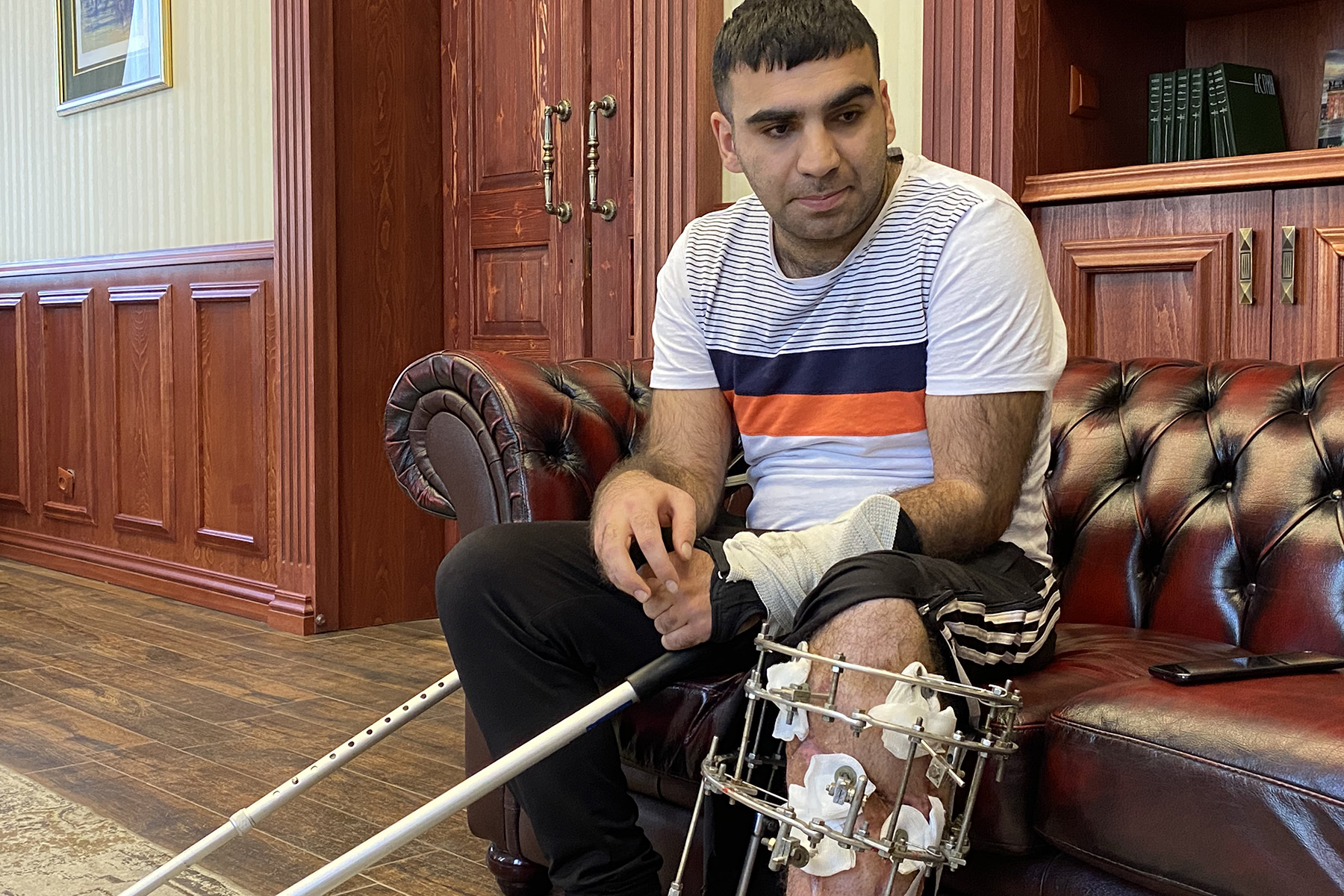
‘I felt like I had an obligation to the country I used to live in, that I belong to’, Hasan told OC Media. ‘I never thought about avoiding military service’.
He said he faced the prospect of service with gravity, as his relative, Kyaram Sloyan, was killed during clashes in April 2016. Sloyan was one of the most well-known victims of the fighting, with images of his mutilated body widely shared online.
Hasan sustained a wound to his leg when a rocket exploded near him and his comrades on the evening of 9 November, just hours before the tripartite peace agreement that brought an end to the fighting was announced.
He was the only one to survive the blast.
It took a month for him to start walking with the help of walking sticks; it will take years before he makes a full recovery.
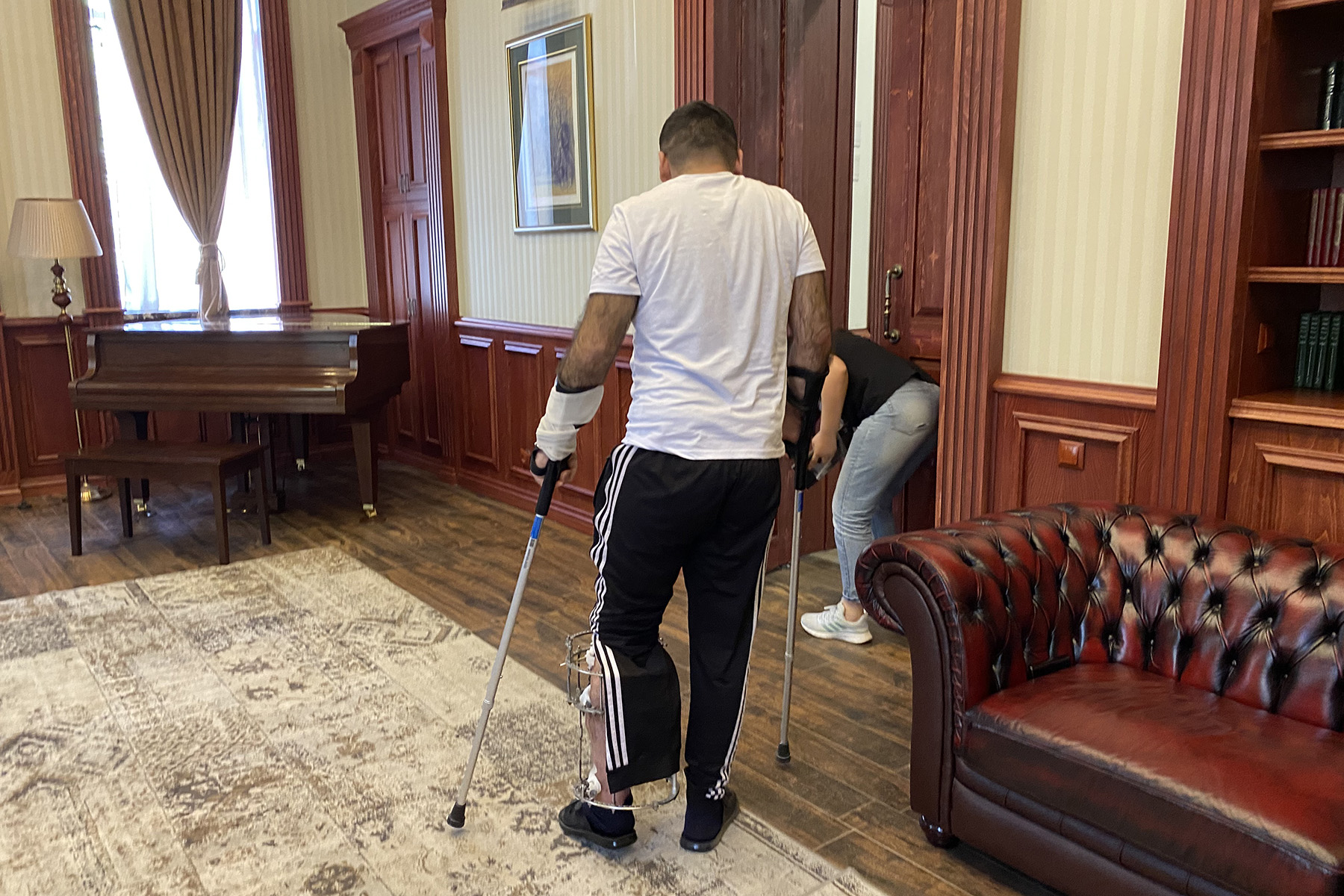
‘I was thinking of my friends every day’, Hasan said of his first days in the hospital, meanwhile, doctors told him that to save his life, they had to consider the possibility of amputating his leg.
The bureaucracy of war
Some of those wounded in the war complain of having to go through reams of red tape and bureaucracy in order to get state funds for treatment.
‘I was told to go back to the military union of Martakert and bring a document to prove that I did truly fight there,’ Simon Hovhannisyan, a volunteer soldier during the war, told OC Media. ‘Yet, it’s hard to imagine a wounded soldier driving several hundred kilometres to bring a document from a military unit that might have been destroyed or captured’.
The government has promised to provide free treatment to those service members, volunteers, and civilians who were injured during the fighting and those who became disabled were promised pensions for the rest of their lives.
Simon said that his name is missing from the lists of the Ministry of Defence, and it wasn’t able to identify him as a participant in the war.
‘I was injured in mid-October — I had a concussion and spent several days at the military position waiting for the ambulance’, he said.

It’s unclear at the moment how many others have faced similar hurdles to Simon and have been unable to access free treatment.
When the war ended and the volunteers and reserves were demobilised, the state fund on his treatment was suspended, and Simon wasn’t able to get the proof of him being a veteran of the war.
He said that when he got in touch with state authorities, he was told that these were technical issues, but no solution was offered.
Thirty-six-year old Khachik Vardanyan’s name appeared on the list of the Ministry of Defence of injured after he was wounded, losing an eye, suffering hearing loss, and sustaining severe trauma to his internal organs.
Khachik , a church worker, went to Nagorno-Karabakh shortly after the war broke out without officially enlisting as a volunteer.
‘It was our fault for not registering as volunteers’, he told OC Media. ‘Together with some priests, we got in the car and headed to Artsakh (Nagorno-Karabakh) without having a plan.’
After being injured, Khachik was moved to a hospital in Armenia, where he spent months receiving treatment. He was eventually transferred to the rehabilitation centre of Armenia’s Red Cross․
Following his official demobilisation, Khachik was deprived of state sponsorship for his medical treatment. He continued to pay through his private health insurance.
He doesn’t know how he will afford further surgeries.
‘Your home is not yours anymore’
Beyond the physical injuries, those who went through the war often experience ongoing and severe psychological problems, many suffer from post-traumatic stress disorder (PTSD).
Psychologists aimed to heal the psychological damage wrought by the war from day one, but the sheer scope of the conflict and the number of victims made theirs an almost impossible task.
[ Read more: Armenia’s psychologists scramble to heal post-war trauma]
‘Once I had a flashback, and lost the ability to recognise where I was, I heard the sounds of shelling and explosions’, Manvel recalled. He added that, for a long time, any loud voice he heard he immediately associated with the war.
Sargis Harutyunyan, 20, originally from the Martakert (Aghdara) region of Nagorno-Karabakh, was already waiting for his turn to return home when the war started, before long, he was severely injured.
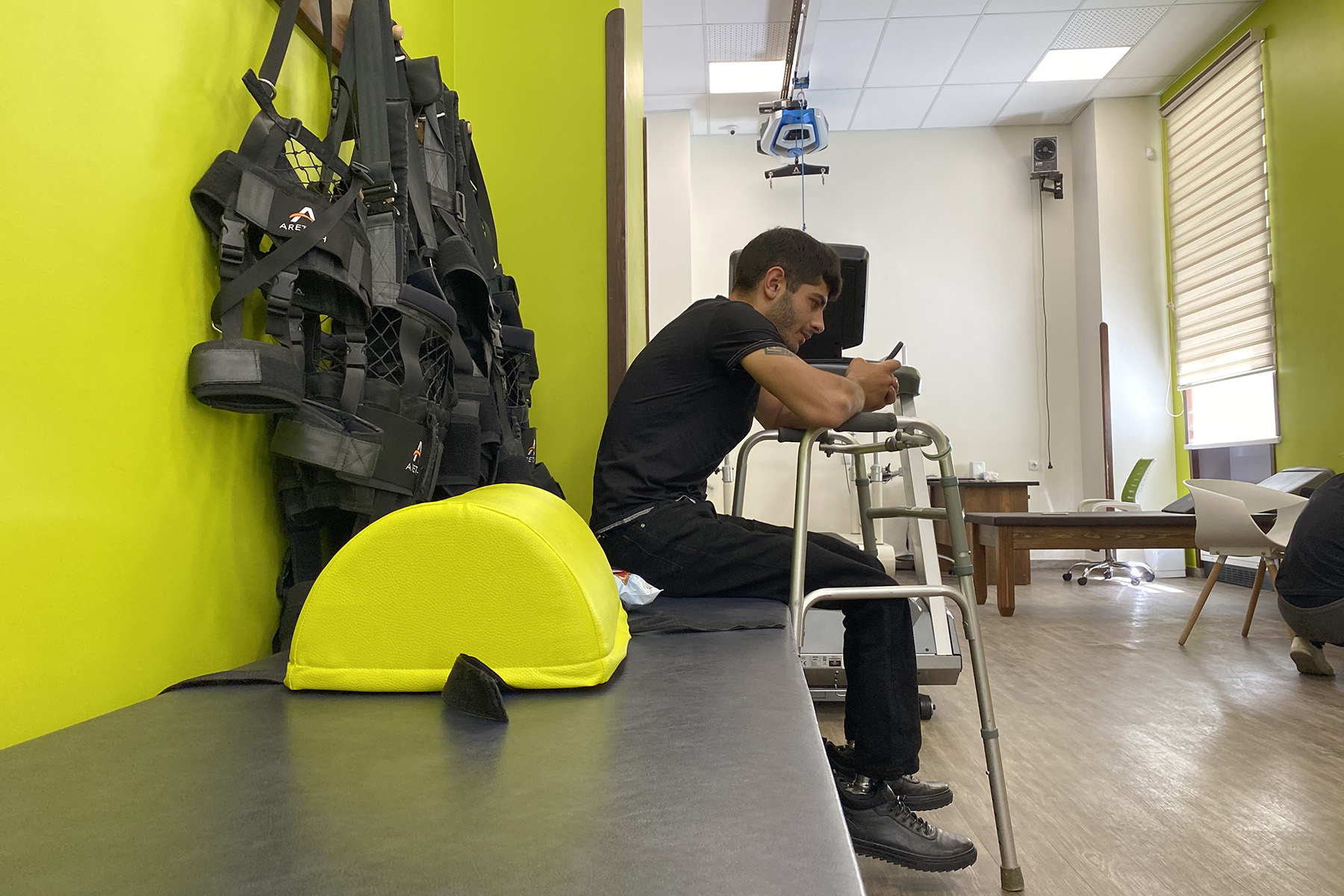
‘The ambulance crashed three times before the Stepanakert hospital’, he said, recalling the constant shelling of roads and settlements along the way. ‘All that time, the medics were trying to keep me awake because if I lost consciousness, I might never wake up.’
Sargis said that despite the emotional connection with his hometown, he can scarcely imagine returning to Nagorno-Karabakh after his rehabilitation is complete.
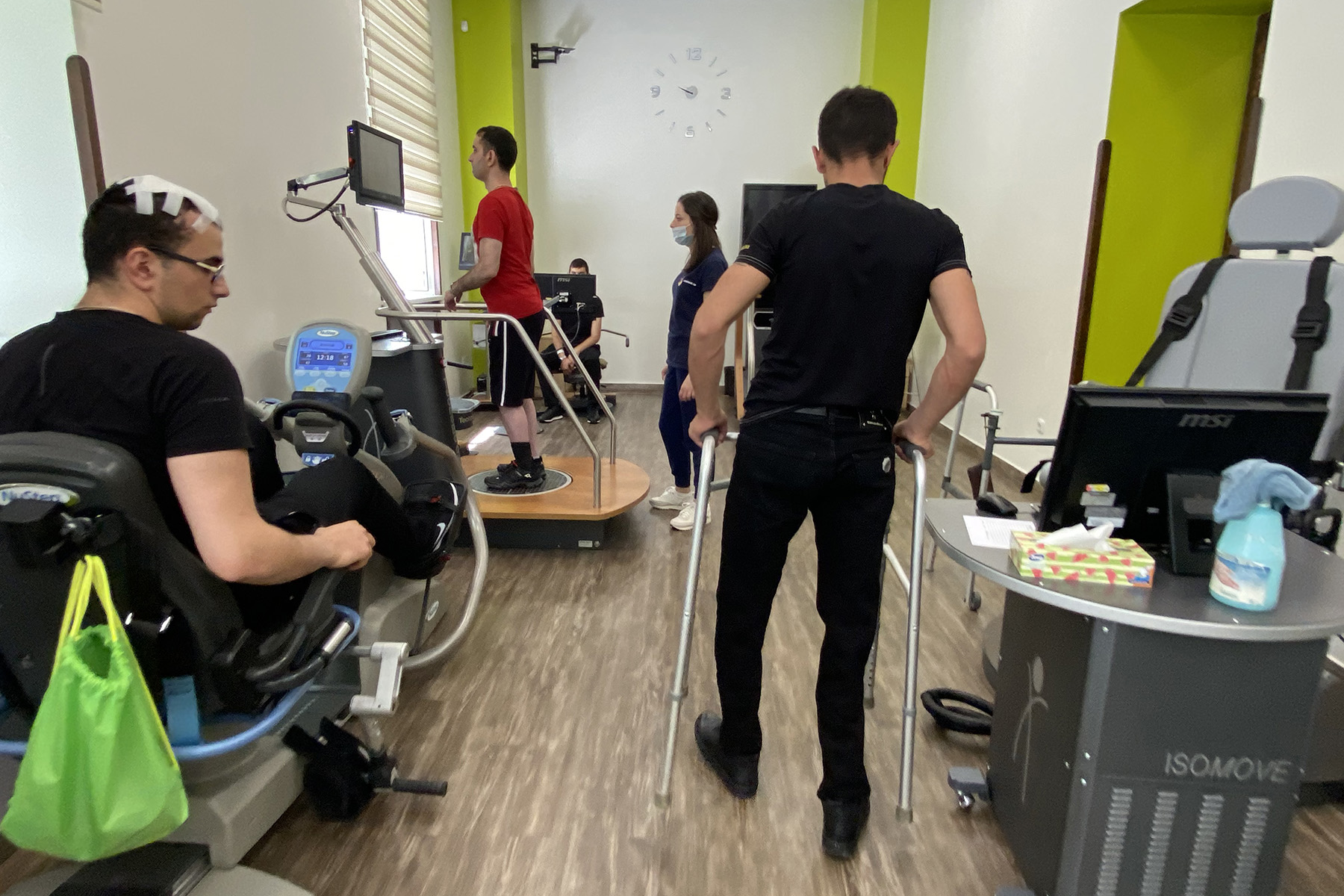
While he can not imagine returning to Martakert, his thoughts on staying in Armenia cause him even more pain. ‘If I choose to live in Armenia, then I will definitely return to Artsakh’, Sargis told OC Media. ‘It’s hard, though. You might think you are back home, but it feels that it’s not yours anymore.
For ease of reading, we choose not to use qualifiers such as ‘de facto’, ‘unrecognised’, or ‘partially recognised’ when discussing institutions or political positions within Abkhazia, Nagorno-Karabakh, and South Ossetia. This does not imply a position on their status.






